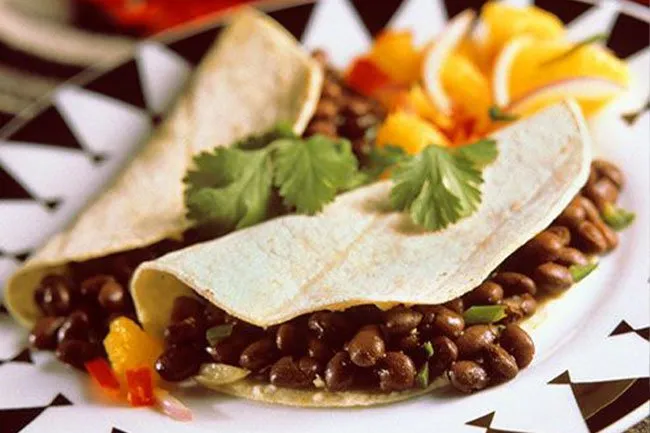Curb Cholesterol, Not Flavor

It's no secret that certain foods can help you lower your LDL ("bad") cholesterol, which causes a buildup of plaque in the arteries that leads to heart disease, heart attacks, and stroke. But what may surprise you is that many of these foods are delicious and easy to incorporate into your everyday meals without sacrificing flavor or fun.
Indulge a Little

Dark chocolate contains flavonoids, antioxidants that help lower LDL levels. Just make sure to eat in moderation, as chocolate is also high in saturated fat and sugar. You can also use dark, unsweetened cocoa powder in your cooking to get similar heart-healthy effects.
Awesome Avocados

There's more to avocados than just guacamole. They give you oleic acid, which helps lower the bad cholesterol in your bloodstream. Try putting a few slices on your turkey sandwich, or add them to a salad. Avocado oil, which has a subtle, sweet flavor, can also be used in place of other oils in cooking.
Raise a Glass

Red wine contains resveratrol, a substance found in the red grape skin, which may prevent damage to blood vessels by reducing the risk of blood clots and lowering LDL. Drinking too much alcohol can cause a host of other health issues, however; so while a glass of red wine at dinner is fine, don't overdo it.
Tea Time

Both black and green teas contain powerful antioxidants that may reduce cholesterol levels. Green tea typically contains more of these antioxidant powerhouses, as it is made from unfermented leaves and is less processed. Just go easy on the cream and sugar.
Go Nuts for Nuts

Nuts are high in polyunsaturated fatty acids, so almonds, walnuts, or pistachios can help reduce your LDL levels. Try sprinkling them on your salad, or eat them right out of hand as a snack. Just be sure to choose the low-salt option, and keep it to about 1.5 ounces a day -- nuts are also high in calories. For almonds, that’s about 30 almonds or 1/3 cup.
Wholesome Whole Grains

Barley, oatmeal and brown rice have lots of soluble fiber, which has been proven to lower LDL cholesterol by reducing the absorption of cholesterol into your bloodstream. Try switching out your regular pasta for the whole-grain version, or use brown rice instead of white. To give an added cholesterol-busting kick, top your morning oatmeal with high-fiber fruit like bananas or apples.
Go Fishing

Fish like salmon, albacore tuna, sardines, and halibut are all rich in omega-3 fatty acids, which reduce triglycerides in the blood. Aim for 8 ounces of fish a week, and bake or grill the fish -- don’t fry it -- to keep it healthy.
Versatile Olive Oil

Olive oil is a plant-based fat, so it's a better choice when you're trying to lower your "bad" cholesterol than fats that come from animals. It's great mixed with red wine vinegar, a minced garlic clove, and a little ground pepper for a salad dressing. For something different, try braising vegetables like carrots or leeks. Just drizzle 3 tablespoons of oil over vegetables in a snug baking dish, scatter some herbs, cover with foil, and put in a 375-degree oven for about 45 minutes.
Oh Boy, It’s Soy

Edamame, soy milk, and tofu are high in protein, and eating just 25 grams a day can reduce your cholesterol by 5 to 6 percent. Snack on edamame, top off your bowl of cereal with soy milk, or sub tofu for meat in your stir-fries.
Bountiful Beans

Black beans, kidney beans, lentils, oh my! All are rich in soluble fiber, which binds to cholesterol in the blood and moves it out of the body. Recent studies show eating 4.5 ounces of beans a day can reduce LDL levels by 5 percent. Try black bean burritos, or dip some veggies in hummus, which is made with chickpeas, for an afternoon snack. Or try this Caramelized Onion and White Bean Flatbread -- beans are so versatile, the possibilities are endless.
Make a Fruitful Change

Pears and apples have a lot of pectin, which is a type of fiber that can lower cholesterol. So do citrus fruits like oranges and lemons. Berries are also high in fiber. Try this Pear and Red Onion Gratin as a side dish. Or grab a Citrus Berry Smoothie in the morning before you head out the door.
Eat Your Veggies

Most vegetables are high in fiber and low in calories. Eggplant and okra contain high amounts of soluble fiber. Eggplants are also high in antioxidants. But any kind of vegetables will give you fiber and nutrients that are good for you.
Fortified Foods

Natural chemicals called sterols, which you get from plant foods, help your body absorb less cholesterol. Now, many foods from granola bars and yogurt to orange juice are fortified with plant sterols, which can help reduce cholesterol levels by 6% to 15%. Just check the label to make sure you're not getting too many calories.
Cholesterol: Foods to Help Lower Bad LDL Cholesterol
This tool does not provide medical advice. See additional information: 
© 1996-2024 WebMD, LLC. All rights reserved.
Source slideshow on WebMD